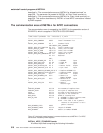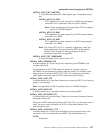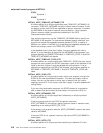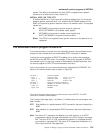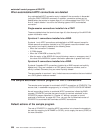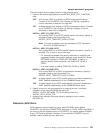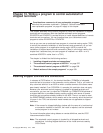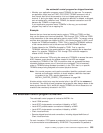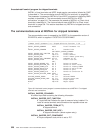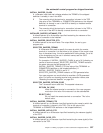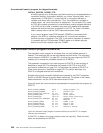CICS-generated aliases
The autoinstall control program is invoked once for each shipped terminal or
connection definition to be installed.
If CICS detects that the name on a shipped definition clashes with the name of a
remote terminal or connection already installed in the AOR, it generates an alias
TERMID and passes it to the control program in field
SELECTED_SHIPPED_TERMID of the communications area.
If CICS detects that there is no clash of names, it passes in
SELECTED_SHIPPED_TERMID the name by which the terminal or connection is
known in the TOR—that is, the value of the TERMINAL or CONNECTION attribute
on the shipped definition.
Your control program can accept the passed TERMID, change it, or reject the
installation of the shipped definition.
CICS-generated aliases consist of a 1-character prefix and a 3-character suffix. The
prefix is always '{'. The suffix can have the values 'AAA' through '999'. That is, each
character in the suffix can have the value 'A' through 'Z' or '0' through '9'. The first
suffix generated by CICS has the value 'AAA'. This is followed by 'AAB', 'AAC', ...
'AAZ', 'AA0', 'AA1', and so on, up to '999'.
Each time that it needs to create an alias, CICS generates a 3-character suffix that
it has not recorded as being in use. If your autoinstall control program overrides a
CICS-generated TERMID, CICS does not record the suffix as being in use, and
supplies the same suffix for the next alias.
Resetting the terminal identifier
You need to think about the algorithm by which your control program allocates alias
TERMIDs.
You must consider the consequences of a definition being deleted by the CICS
timeout delete mechanism, and subsequently being re-shipped and re-installed. You
must decide whether your autoinstall program should allocate the
same
TERMID as
before (which implies a file mapping the name by which the terminal is known in the
TOR to the alias allocated by the AOR), or whether allocation of a different TERMID
is acceptable—in which case you could use the default aliases generated by CICS.
This decision may depend on several factors. For example:
v How your application programs allocate temporary storage queue names. If they
derive them from the TERMID (so as to associate the queue with a particular
end-user), problems of data mismatch could occur if the queue is not emptied by
transaction end (possibly due to a failure), and TERMIDs are not allocated to the
same terminals consistently.
The best solution is for your application programs always to check before
creating a temporary storage queue whether a queue of the same name already
exists, and, if so, to delete it. This dispenses with the need for your autoinstall
program to allocate TERMIDs consistently.
However, if your application programs do not already implement this check, it
may not be possible to correct them all. In this case, your autoinstall program
may need to use a mapping file, as described above.
the autoinstall control program for shipped terminals
524
CICS TS for OS/390: CICS Customization Guide



